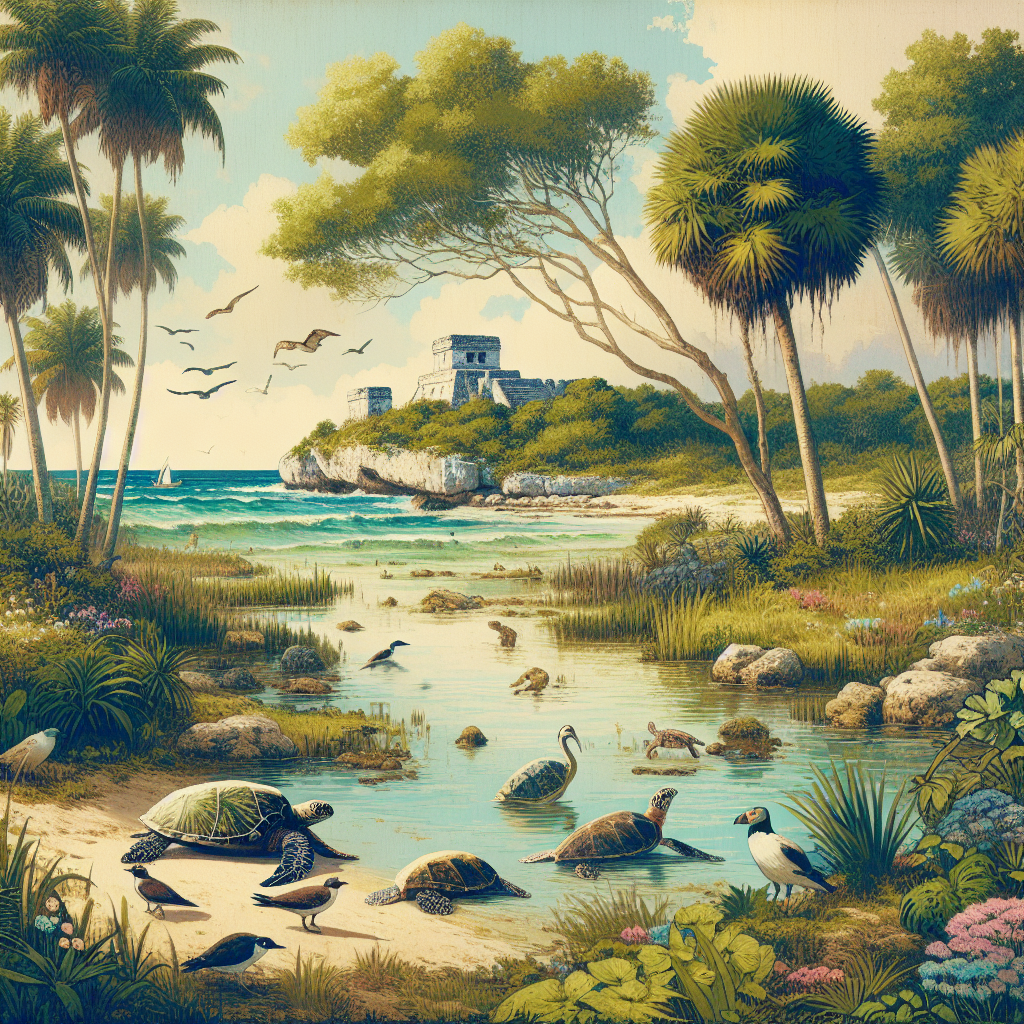Rescues and Revelations: Tulum’s Conservation Stories
The Enchanting Biodiversity of Tulum
Nestled along the crystal-clear Caribbean coast of Mexico, Tulum is not just a hub of tourism and luxury; it is also a vital sanctuary for diverse ecosystems. The coastal town is part of the Mesoamerican Reef System, the second-largest coral reef in the world. This vibrant underwater landscape is home to an array of marine life, including endangered species like the hawksbill turtle and the manatee, both of which face significant threats from human activity.
The Hawksbill Turtle Conservation Efforts
One of the poignant stories of conservation in Tulum centers around the hawksbill turtle. During nesting season, between May and October, local volunteers from organizations such as “Grupo Tulum” engage in extensive monitoring. They patrol the beaches to protect nesting sites from poachers and natural threats. The community has established a hatchery system, where eggs laid on the beach are relocated to a protected environment. This initiative has seen an increase in successful hatching rates, showcasing how collective awareness and dedication can lead to a revival of endangered species.
Coral Reefs: Rehabilitation Initiatives
Coral reefs in Tulum have been under siege from climate change, pollution, and overfishing. In response, organizations like the “Cenote Conservation” project have implemented coral restoration programs. These programs focus on transplanting coral fragments to depleted reef areas. Techniques such as nurseries, where corals grow out of the water and are nurtured until they are ready to be planted on the reef, have shown promising results. Studies indicate that these restoration efforts boost local biodiversity and improve fish populations, which are crucial for ecological balance.
Mangroves: Guardians of the Coast
The mangrove forests flanking Tulum serve as crucial buffers against coastal erosion and provide vital habitats for various wildlife. The “Sian Ka’an Biosphere Reserve,” a UNESCO World Heritage site, plays a pivotal role in protecting these coastal ecosystems. Local ecologists work tirelessly to safeguard these areas from illegal logging and pollution. Educational programs aimed at local communities emphasize the importance of mangroves, fostering a sense of stewardship among residents and encouraging sustainable practices.
Wildlife Rehabilitation: Hands-on Conservation
Animal rescue efforts in Tulum have gained momentum, particularly through organizations like “Cenote Animal Rescue” and “Tulum Wildlife Rescue.” These initiatives focus on rehabilitating injured and orphaned wildlife, such as local birds and reptiles. Volunteers are trained to care for these animals, providing medical treatment and fostering. Following rehabilitation, these animals are released back into their natural habitats, ensuring their survival while maintaining ecological balance.
Community Engagement: The Backbone of Conservation
Conservation in Tulum thrives on community involvement, making it a grassroots movement fueled by passion. Local residents participate in beach clean-ups, educational workshops, and conservation campaigns. Schools have incorporated environmental education, teaching children about the importance of biodiversity and conservation. Initiatives like “Eco Tulum” inspire eco-conscious tourism by encouraging visitors to engage in sustainable practices and support local conservation projects.
Ecotourism: A Double-Edged Sword
While Tulum has become a popular destination for travelers seeking picturesque beaches and ancient ruins, this influx poses challenges to its delicate ecosystems. However, responsible ecotourism can also benefit conservation efforts. Many tour operators now offer environmentally friendly excursions, guiding visitors to explore the region’s natural beauty while emphasizing conservation messages. By promoting awareness and economic incentives for protecting the environment, the tourism industry can play a pivotal role in funding conservation projects.
The Role of Technology in Conservation
Recent technological advancements have also impacted conservation strategies in Tulum. Drones are increasingly being deployed for aerial surveys, enabling researchers to monitor coral reefs and mangrove health more efficiently than ever before. Satellite imaging allows conservationists to track changes in land use and assess the effects of climate change on local ecosystems. These tools not only enable better data collection but also improve response strategies for environmental threats.
Success Stories: From Rescues to Revelations
Documenting success stories is vital for ongoing conservation efforts. Tulum has seen several notable achievements. For example, the rise in hawksbill turtle populations due to community-led hatchery programs has inspired similar initiatives along the Riviera Maya. Additionally, coral restoration projects have yielded thriving patches of once-dead reef, supporting the regrowth of diverse marine species. These victories highlight the importance of perseverance and innovation in the field of conservation.
Future Challenges and Opportunities
Despite significant progress, challenges remain on the horizon for Tulum’s ecosystems. Climate change continues to threaten coral reefs and mangroves, making it imperative to develop adaptive management strategies. Increased tourist activity requires a balanced approach to ensure that Tulum’s natural heritage is preserved. Collaborative efforts among local governments, NGOs, and the community will be essential to navigate future obstacles.
Inspiring Global Action: Tulum’s Conservation Model
The stories of rescue and revelation in Tulum are not just local narratives; they serve as a model for global conservation efforts. By highlighting the intersections of community, technology, and ecological science, Tulum showcases the power of collective action. As the world confronts environmental crises, lessons from Tulum can inspire other regions to take proactive steps in preserving their unique natural environments.
Closing Thoughts on the Rhythms of Resilience
Amid the challenges, the spirit of Tulum remains vibrant, showcasing resilience and hope. Through dedicated conservation efforts, the community continues to protect and celebrate its rich biodiversity. As Tulum navigates its ongoing journey, the stories of rescue and revelation will undoubtedly inspire future generations to cherish and safeguard the world’s natural wonders.







